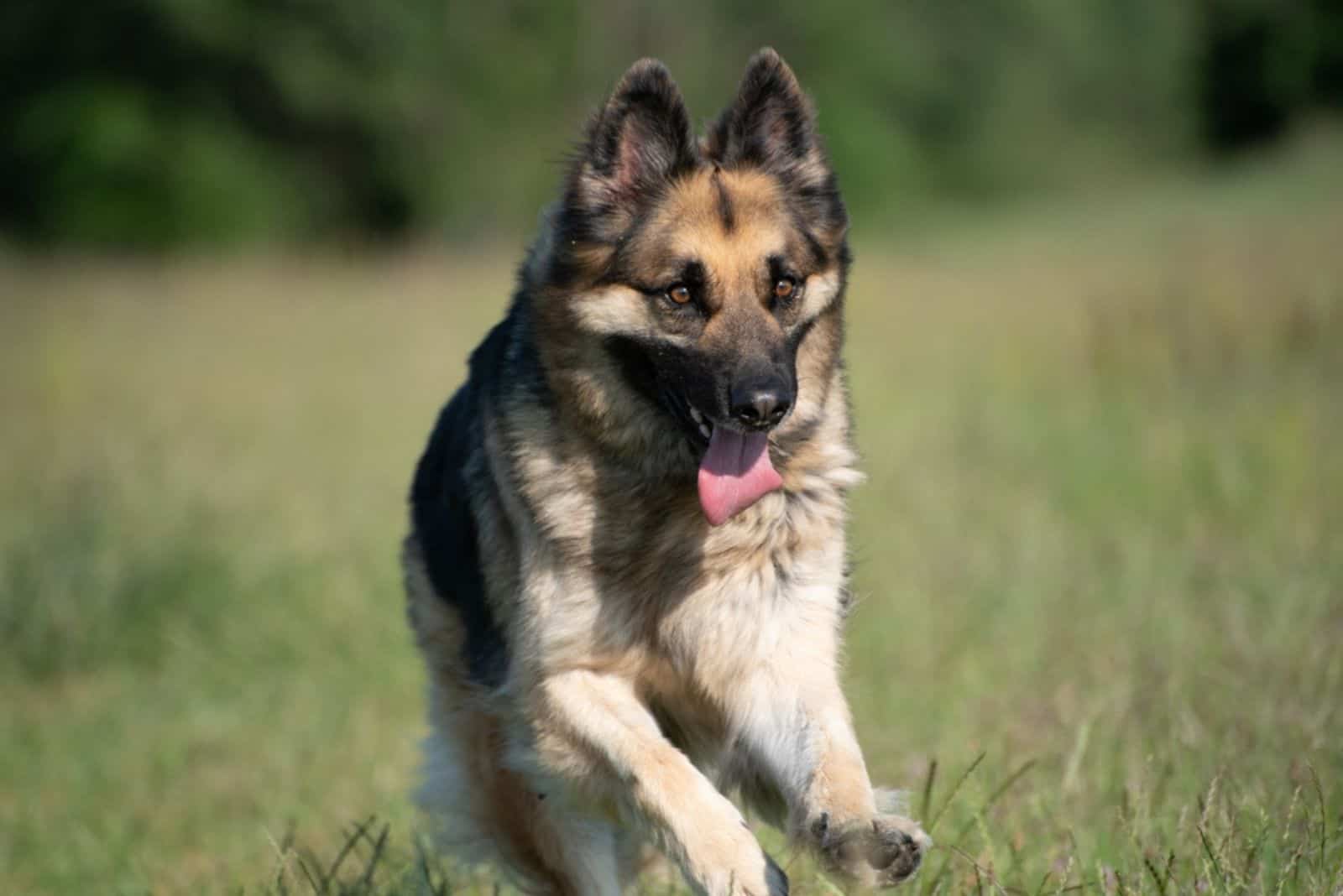Did you know that German Shepherds have been a recognized breed for over a century? In fact, they rank as the second most popular breed in the United States, according to the American Kennel Club.
So, without further ado, I present to you the German Shepherd dog history – a real-life fairytale about these four-legged wonders that have won our hearts with their loyalty, intelligence, and bravery.
Why Knowing German Shepherd Dog History Is Key to Understanding This Remarkable Dog
If you want to truly understand the German Shepherd dog breed, you have to go back in time! Like, waaaaay back to the late 1800s!
All of the qualities we love about German Shepherds, their intelligence, loyalty, and dedication towards their owners, are directly tied to their history.
So, if you want to truly appreciate what makes these pups so special, you have to take a peek into their past. Trust us, it is going to be an interesting return to the past!
How Max Von Stephanitz Made The GSD What It Is Today
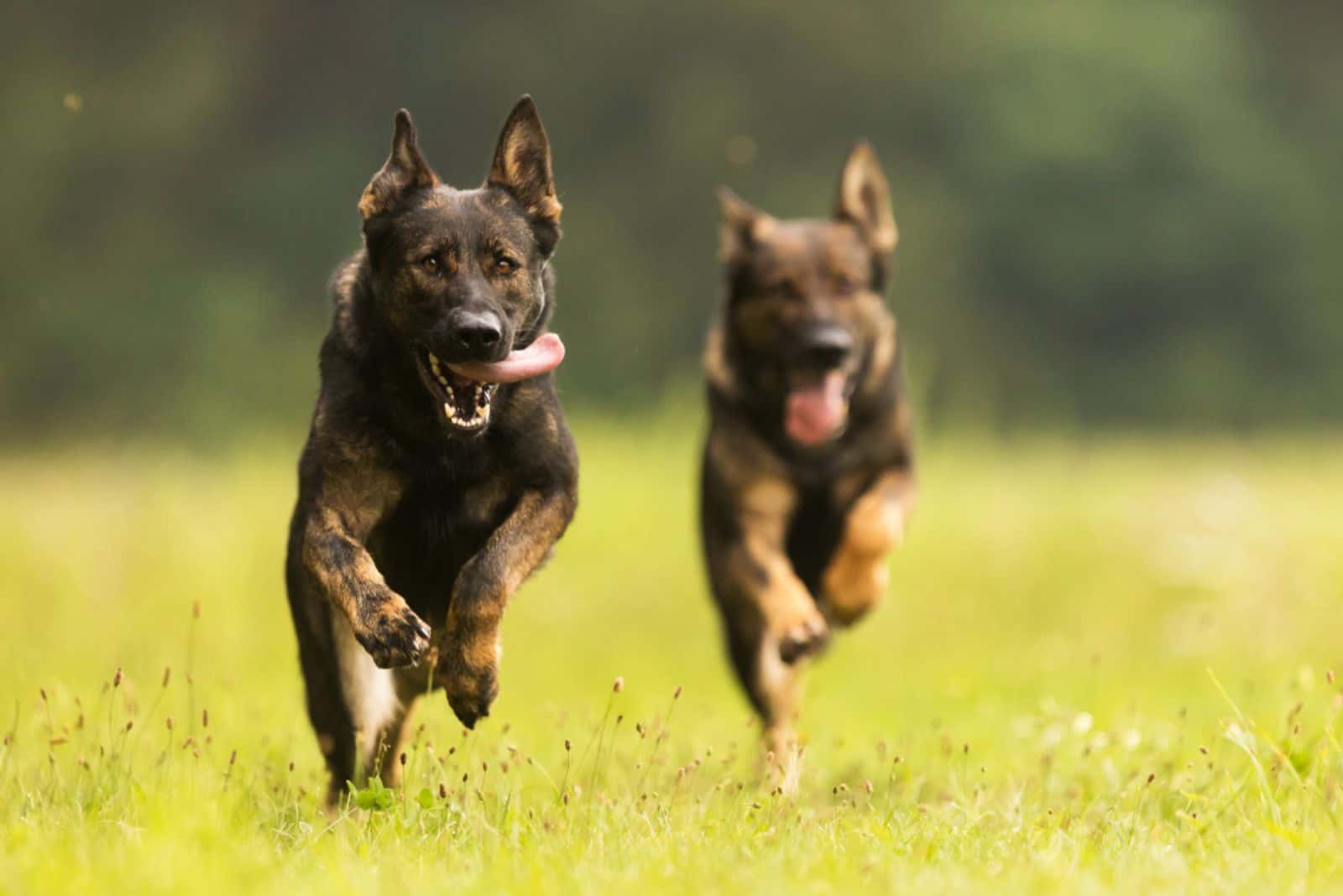
Meet the man behind the legend – Max Von Stephanitz.
Back in the 1800s, this retired captain had a wild idea to create the ultimate working dog, capable of doing just about anything. And that’s exactly what he did.
With the help of some clever crossbreeding and careful training, he developed a dog that was not only a skilled herder and guard, but also a fearless military and police helper. Talk about a Renaissance dog!
He had a vision for a versatile working dog that could excel in a variety of tasks, such as herding, guarding, hunting, and protecting.
To create this breed, von Stephanitz scoured Germany for the best working/herding dogs he could find.
He believed that the dog’s abilities and character were more important than its appearance, so he didn’t focus on breeding for a particular look.
The Earliest German Shepherd Ancestors
Did you know that the German Shepherd has an ancient ancestor that’s been around since before the modern breed was even a twinkle in Max von Stephanitz’s eye?
The Old-World German Shepherd dog was actually a major inspiration for von Stephanitz when he set out to create the GSD as we know it today.
For starters, he introduced the German Sheepdog into the breeding program. This breed was used for herding and guarding sheep, and it is believed that modern-day GSD have some of their genes.
The modern GSD puppy has such a strong sense of smell thanks to the Württemberg Hound, one of the hound dog breeds that excelled in tracking and retrieving game.
It is believed that these dogs got their smart brains from a breed that was used to herd sheep, the majestic Thuringian Sheepdog.
Unfortunately, most of these dogs are now extinct breeds.
What Was The Original German Shepherd Dog?
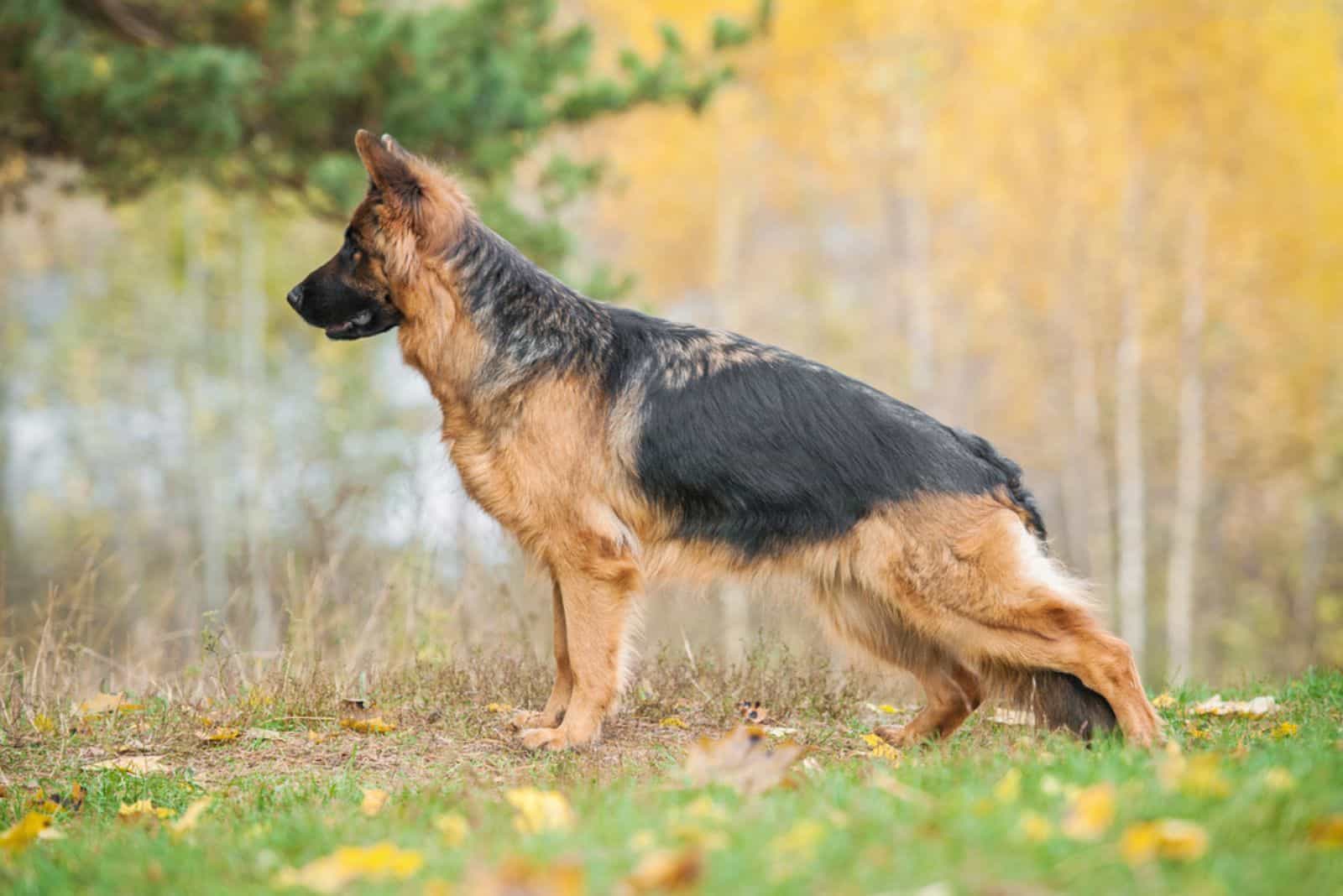
Meet Horand von Grafrath, a.k.a the OG German Shepherd Dog. He was born on January 1, 1895, and he’s the reason why we have all these fluffy and loyal puppers around us today!
Horand came from a litter of Thuringian shepherd dogs, which were known for their wolf-like appearance and tall, pointy ears. His mom was Lene, and his dad was Kastor, who was the son of a championship dog named Pollux. So, you could say that Horand comes from a long line of champion dogs!
Before he was known as Horand von Grafrath, he was actually called Hektor Linksrhein. But I guess that name wasn’t cool enough for such an awesome dog, so his owner changed it.
Anyway, Horand had a gray-yellow sable coat, which I think is a pretty fancy way of saying he was a handsome dog.
And let’s not forget about Horand’s littermate, Luchs, who was also famous in his own right. I bet they got into all sorts of trouble together!
Without them, we wouldn’t have the German Shepherds that we all know and love today.
Heroic Role German Shepherds Played In World War I and II
During World War I and II, German Shepherds were recruited into the military to serve as messengers, scouts, and even parachute jumpers!
These brave and intelligent pups played a heroic role in the war effort and helped to save countless lives. It’s no wonder they’re known as one of the most loyal and courageous dog breeds out there!
Let’s see how they earned such a badass title!
From Battlefield to Homefront
German Shepherds were known as true defenders of justice.
During World War I and II, they were trained and used by various armies around the world for a variety of tasks, including as messengers, scouts, canine sentries, and even as guard dogs.
They were also used by police forces to help track criminals and search for missing persons which is why they excel in search and rescue parties nowadays.
German Shepherds played a vital role in both war and peace, and their legacy as military and police dogs lives on to this day.
The Story Of Rin Tin Tin
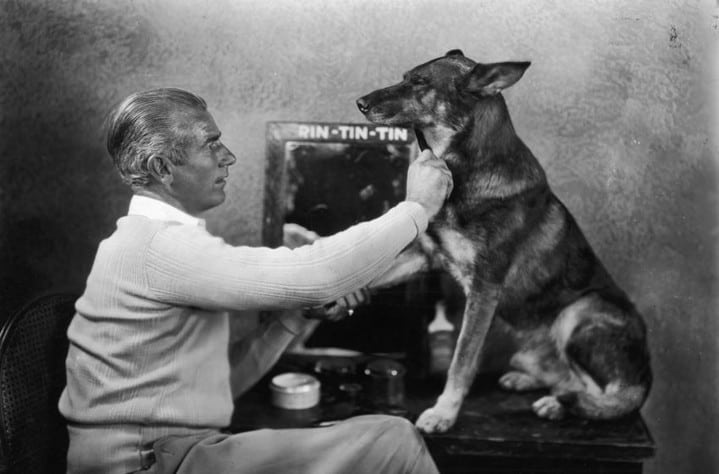
Let me tell you a fun story about a dog named Rin Tin Tin!
During World War I, an American soldier named Lee Duncan found Rin Tin Tin in a ruined kennel in France. Duncan decided to bring the puppy back to the US, where he trained him to be a movie star!
Rin Tin Tin became a huge sensation in the 1920s and 30s, and he helped to make German Shepherds one of the most popular breeds in America.
But here’s the best part: Rin Tin Tin wasn’t just a movie star, he was also a symbol of hope for Americans during a tough time.
You see, during the war, many Americans were wary of anything German.
But Rin Tin Tin helped to show that not everything German was bad – in fact, some things, like the amazing German dog breeds, were downright pawsome!
The Unstoppable Growth Of GSD Popularity In The United States
The German Shepherd dog’s popularity in the United States started to take off in the early 1900s, around the time that the breed was first introduced to the country.
However, it wasn’t until after World War I and II that their popularity really skyrocketed, thanks to the many American soldiers who had worked alongside the breed during the wars and brought them back home with them.
From there, the GSD’s reputation as a hero only continued to grow, leading to the breed’s current status as one of the most popular in the US.
How Breeding Standards And Kennel Clubs Recognized The German Shepherd As A Breed

It took some time for German Shepherds to be recognized as a breed, but eventually, their unique qualities and talents won over the hearts of breeders and kennel clubs.
With their wagging tails, these clever and courageous canines quickly rose through the ranks to become one of the most beloved breeds in the world, earning countless fans with their intelligence, loyalty, and wag-worthy personalities.
The American Kennel Club (AKC) first recognized the German Shepherd dog as a breed in 1908.
At that time, the breed was still relatively new to the United States, but it quickly gained popularity thanks to its many impressive qualities.
Today, the GSD is a treasured member of many families and has left a persisting paw print on the world of dog lovers everywhere!
Genetic Problems Associated With Overbreeding German Shepherds
Unfortunately, overbreeding and irresponsible breeding of German Shepherds has led to a number of genetic problems in the breed.
Some common health issues include elbow and hip dysplasia, which can cause symptoms such as pain and mobility problems.
In addition to hip dysplasia and other issues, overbreeding of German Shepherds has also been associated with spinal problems such as intervertebral disc disease, bloat (gastric torsion), degenerative myelopathy, ear infections, and skin allergies.
Modern Challenges Surrounding The German Shepherd
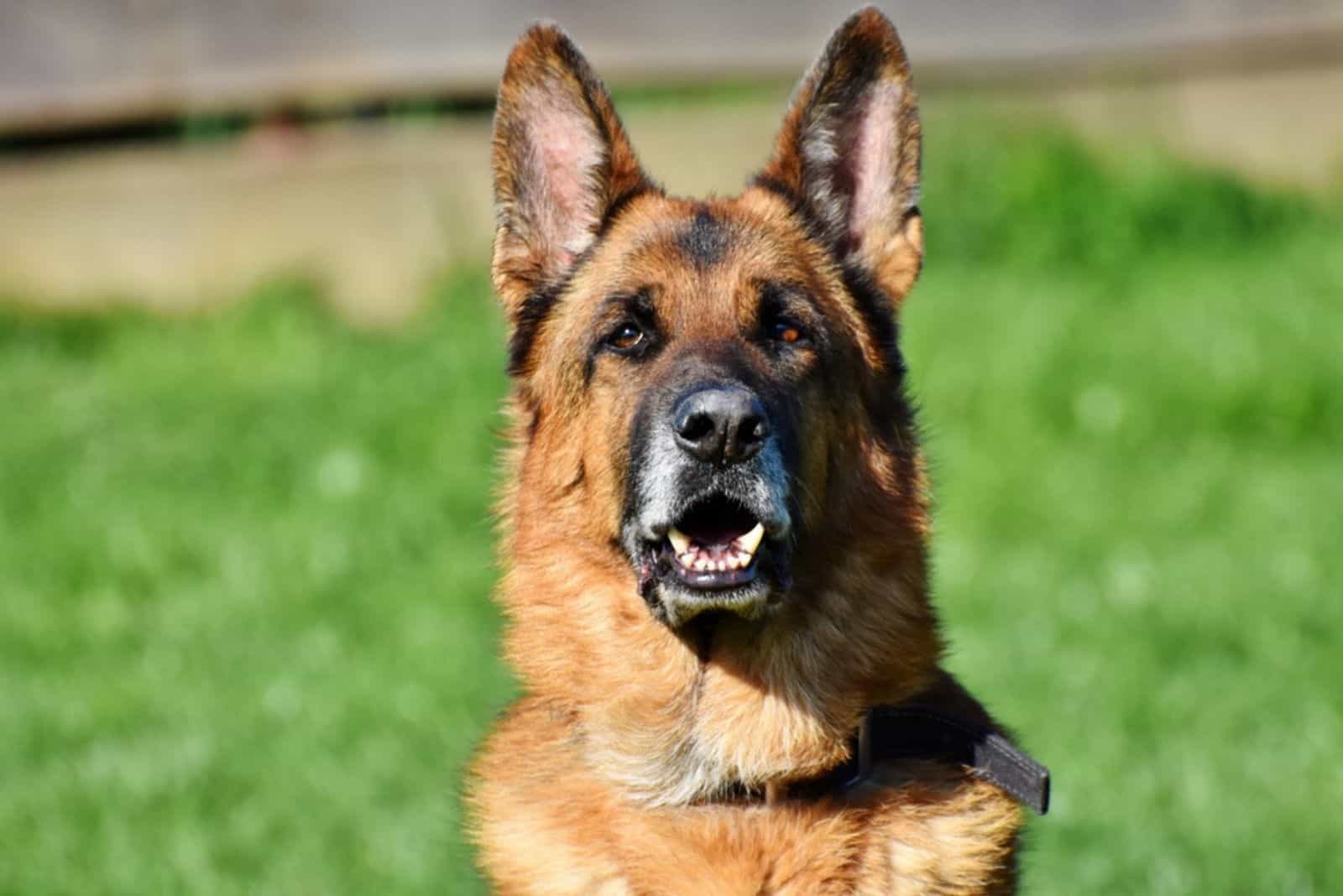
Well, one modern challenge facing the German Shepherd is their extreme popularity, everyone wants one!
This can lead to overbreeding and a greater risk of genetic health issues, as we discussed earlier.
Another challenge is that the breed’s working ability and appearance are often prioritized over their overall health and temperament, leading to dogs that may not be well-suited to all types of homes.
Plus, with so many German Shepherds out there, it can be tough for shelters and rescue groups to find homes for all of them. We believe that it is better to adopt, rather than shop for one!
Another modern-day challenge is the common misconception about these wonderful pups is that they are inherently aggressive or dangerous dogs.
While it’s true that some German Shepherd types were originally bred for herding and protection work, their aggression is typically directed towards potential threats to their families or flocks – not towards people in general.
In fact, with proper training and socialization, German Shepherds can be loving and loyal family pets.
It’s important not to judge a dog by their breed alone, but to consider each dog as an individual with their own unique personality and behavior.
Final Thoughts
The German Shepherd dog history is a rich and fascinating tale that spans over a century.
From their humble origins as herding dogs in Germany to their heroic roles in World War I and II to their unstoppable growth in popularity in the United States, GSDs have certainly left their paw print in history.
While overbreeding and genetic problems pose modern challenges for the breed, with proper care and attention, these pups can continue to be beloved family pets and working dogs for generations to come.
